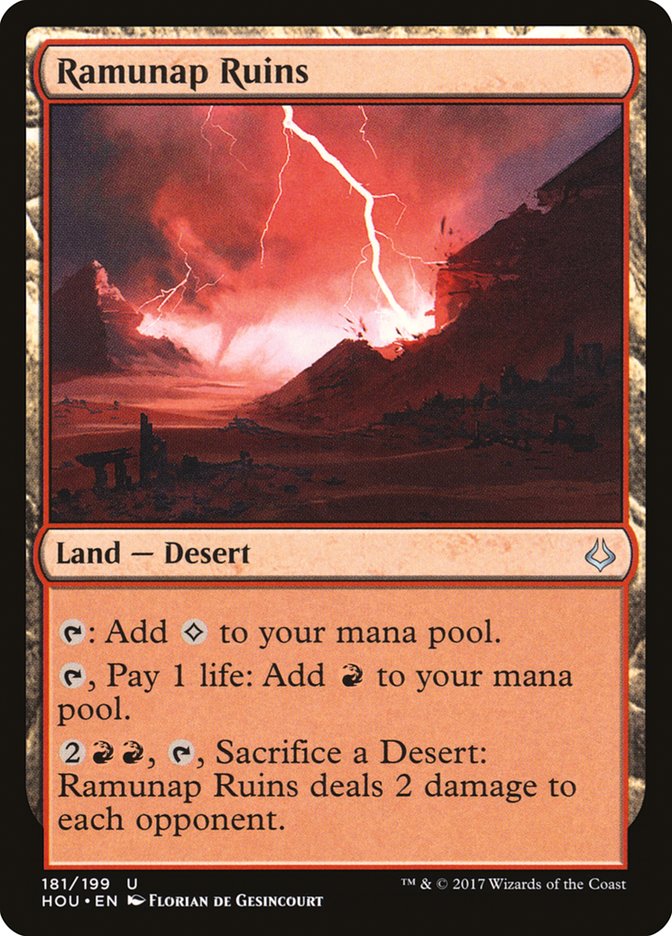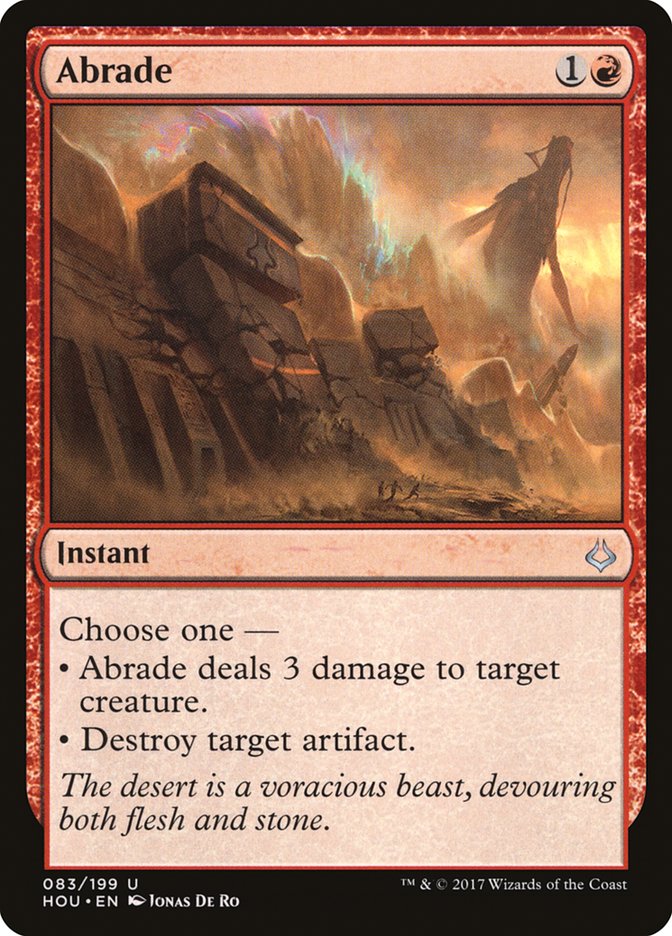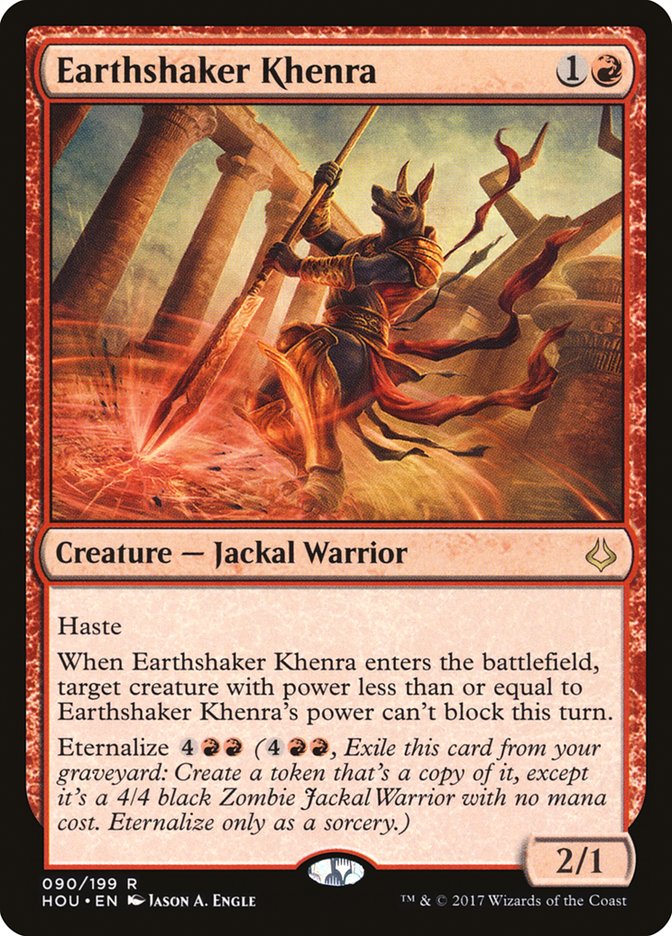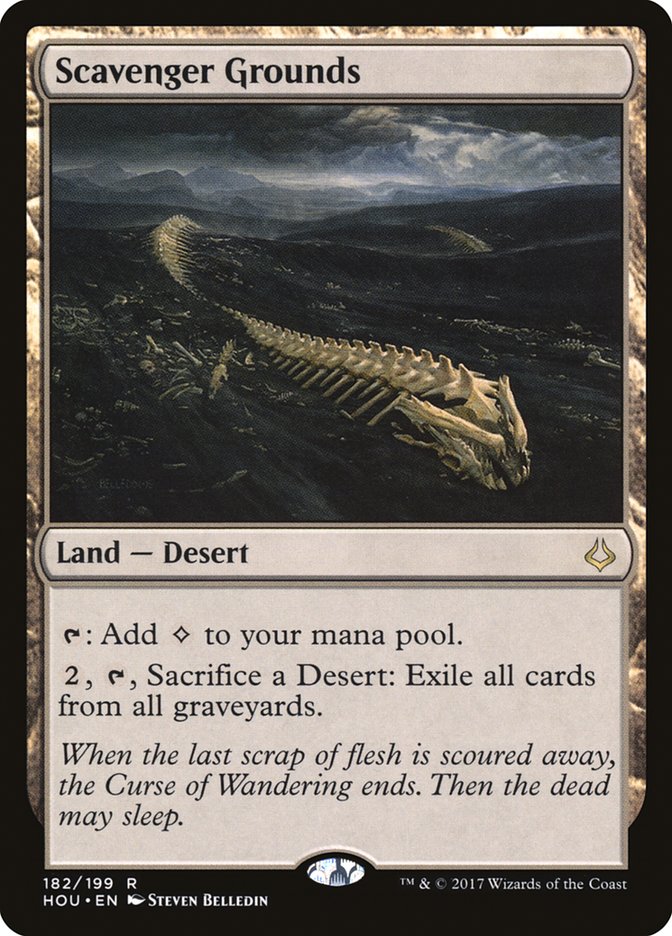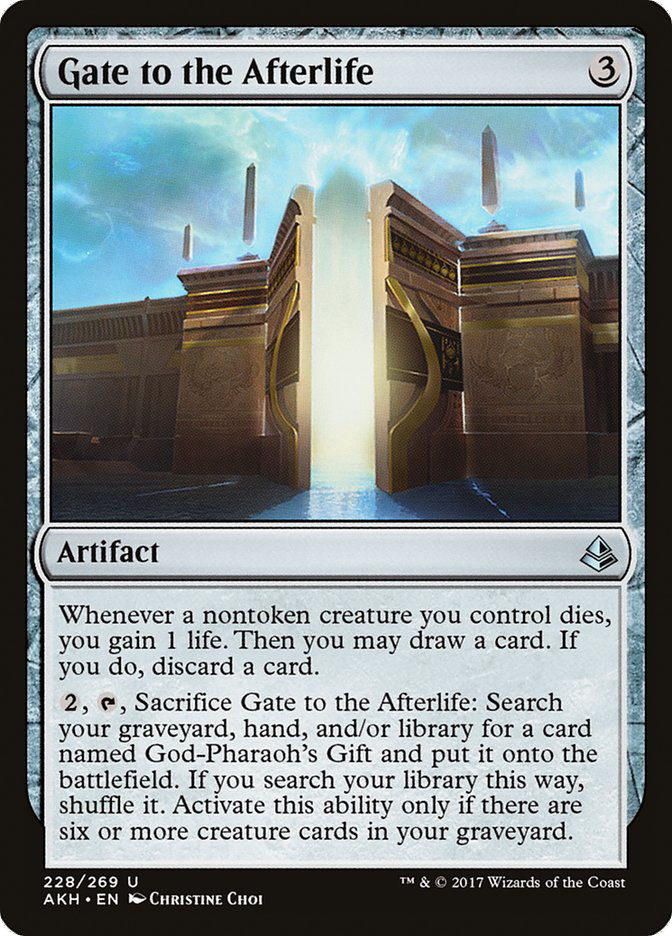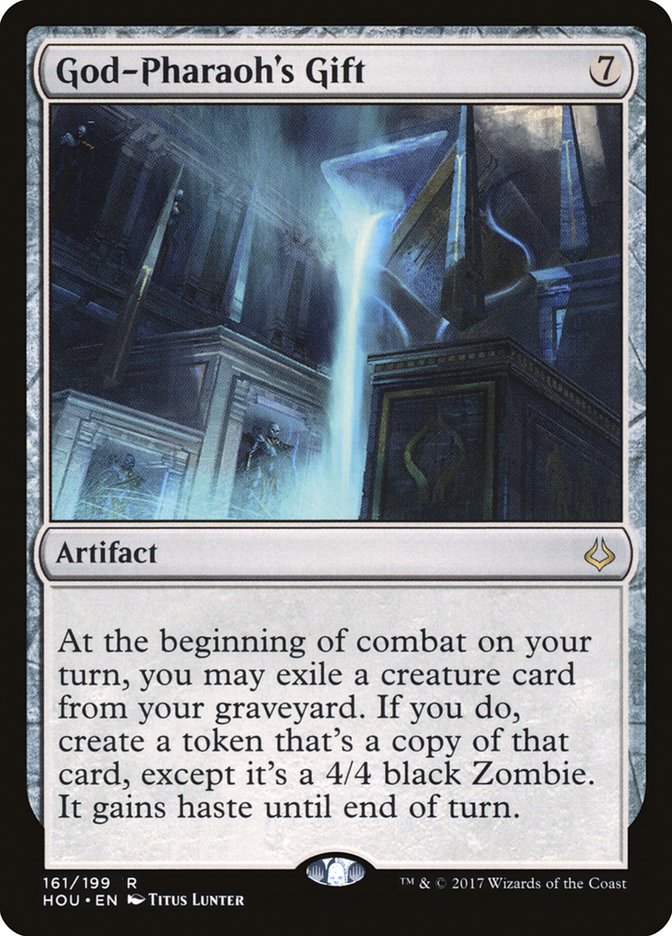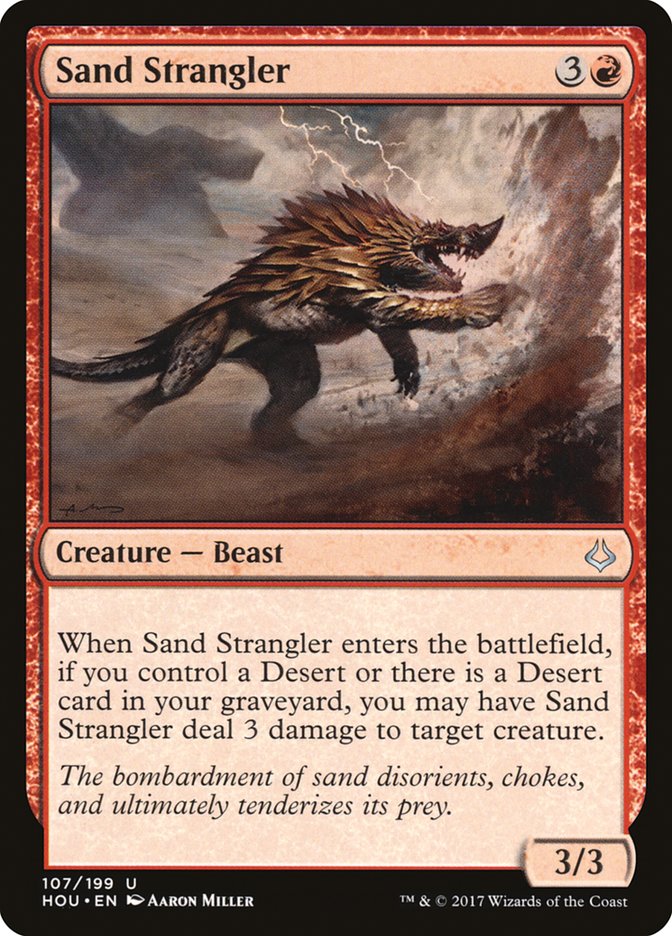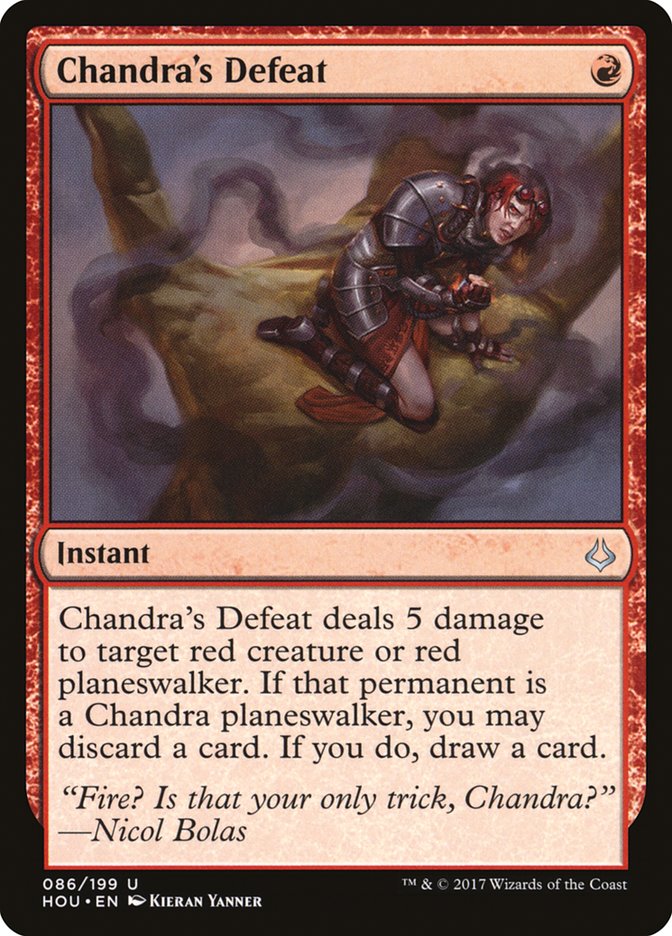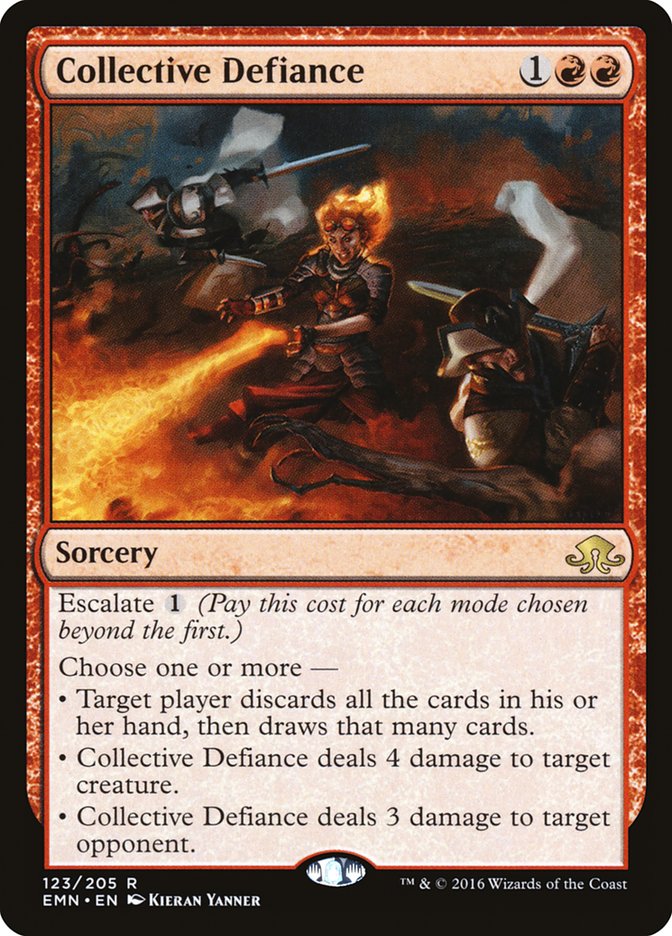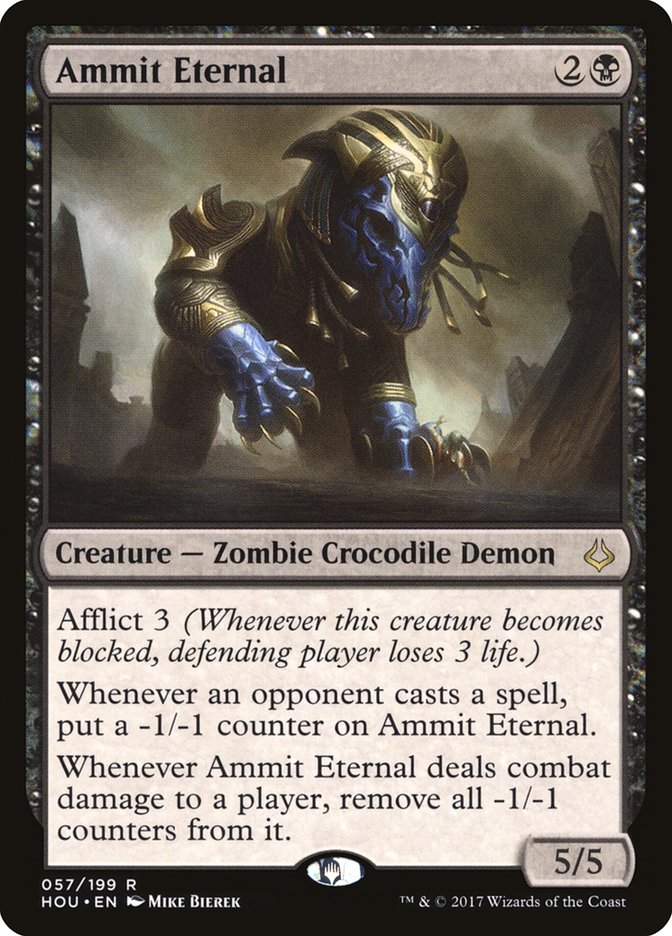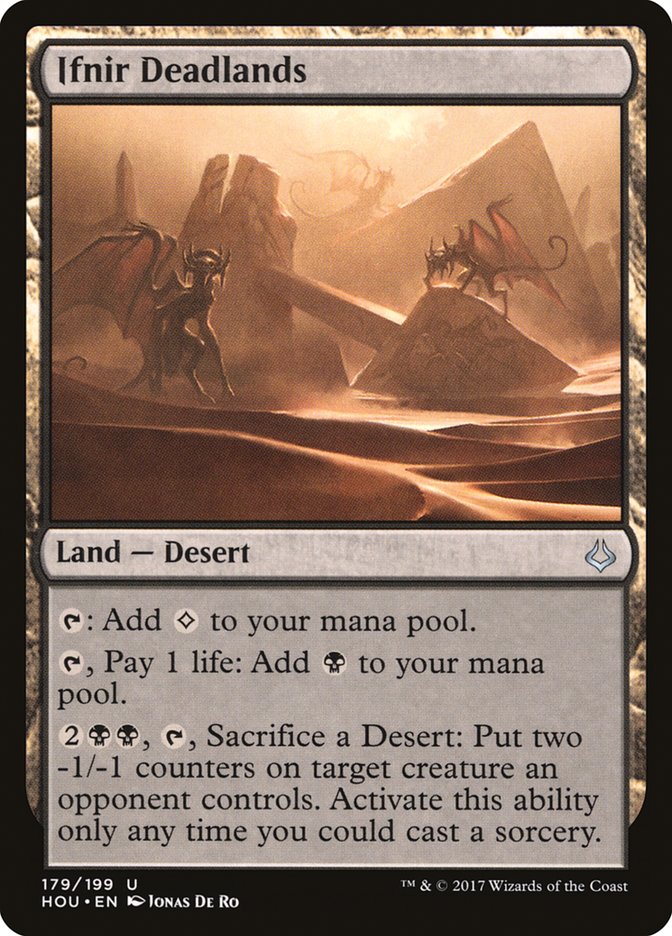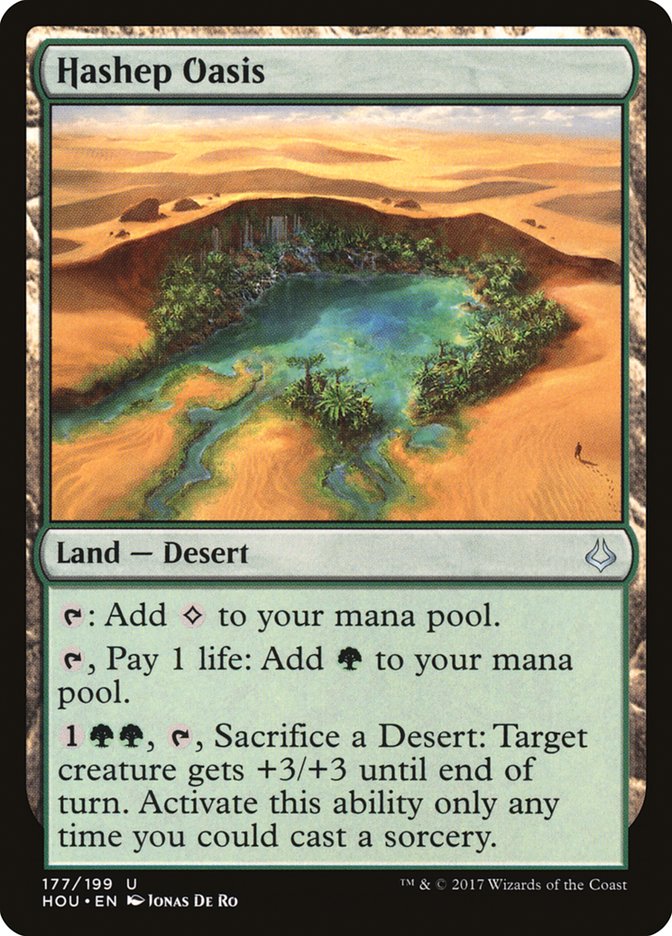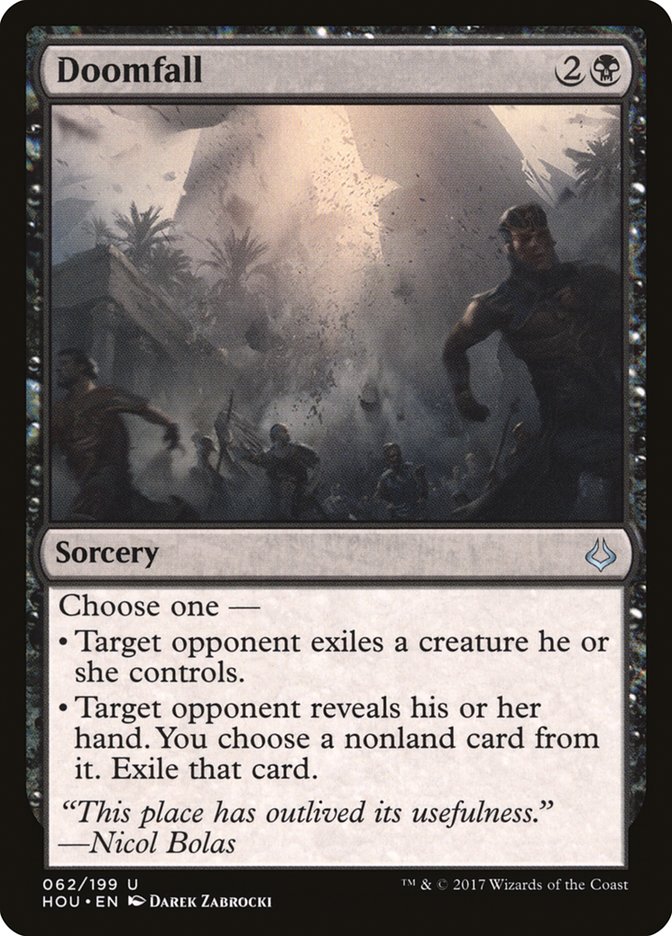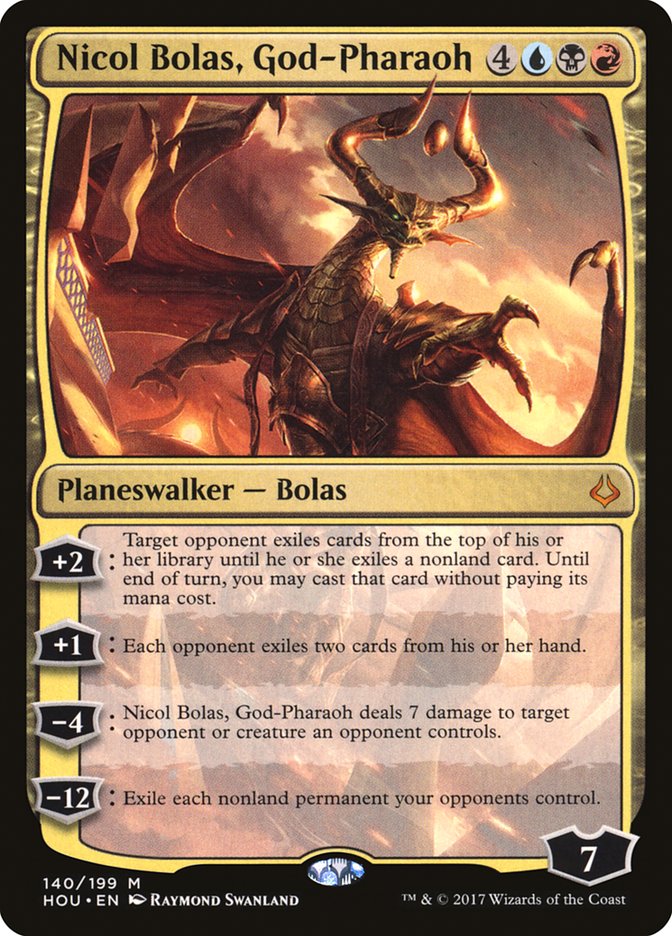Red Deck Wins is back, baby.
The reason?
The added reach with so little opportunity cost has been a powerful contributor to Ramunap Red bursting onto the scene and catapulting to the top of the format uncontested. It has also proven an invaluable addition to R/G Ramp and Eldrazi Aggro, but without question, it is Ramunap Red that has set the pace for the format.
Of course, it didn’t do it on its own.
Abrade is quite possibly the best card in Hour of Devastation and is almost assuredly the most-played, with nearly 60% of the field running the card. The format has gotten fast, and Abrade lines up well against the host of lethal one- and two-drop threats coming from Ramunap Red, Zombies, B/G Aggro, Mardu Vehicles, and Temur Energy. Unlike Harnessed Lightning, it can also kill a Heart of Kiran unassisted, take down a Gearhulk, destroy an Oketra’s Monument, or blow up either Gate to the Afterlife or God-Pharaoh’s Gift.
Before we dive into the specific decks, let’s take a quick look at the format as a whole. The following chart is mostly just raw numbers, with the winners’ metagame being players with a 6-4 or better record in Standard. The winners’ weighted metagame is that same subset, but weighted by number of match points earned with the deck.
|
Archetype |
Day 1 Meta |
Winners’ Meta |
Winners’ Weighted Meta |
|
Ramunap Red |
24.8% |
30.3% |
29.7% |
|
Zombies |
13.3% |
18.0% |
17.8% |
|
B/G Constrictor |
9.7% |
16.6% |
15.8% |
|
Vehicles |
7.1% |
7.9% |
11.0% |
|
Temur Energy |
3.7% |
5.8% |
5.6% |
|
U/R Control |
6.3% |
5.0% |
4.7% |
|
R/G Ramp |
5.2% |
2.9% |
2.8% |
|
Eldrazi Aggro |
2.2% |
2.9% |
2.7% |
|
3.9% |
2.9% |
2.5% |
|
|
R/B Midrange |
3.5% |
2.2% |
1.9% |
|
Miscellaneous |
13.2% |
5.6% |
7.0% |
This is kind of an interesting breakdown, with all five of the most popular archetypes overperforming and every other major archetype underperforming, with the exception of Eldrazi Aggro. Of course, Eldrazi Aggro combines several different builds and is still a relatively small sample size.
Generally speaking, the more out of sync win rates are with popularity, the more the format is likely to meaningfully evolve. Pro Tour Hour of Devastation was very much the opposite, which implies that the format is actually going to collapse into paper-rock-scissors quickly. Even though nearly 60% of the format played one of the five most popular archetypes, they all had winning records, suggesting they should have been played even more than they actually were.
Hrmm…
Perhaps more concerning is the overwhelming amount of aggro. Of the archetypes producing an above average number of wins, all are aggro decks. In fact, when you look at the field as a whole, the picture starts to look pretty messed up.
|
Macro Strategy |
Day 1 Meta |
Winners’ Weighted Meta |
|
Aggro |
78.2% |
86.8% |
|
Combo/Ramp |
10.5% |
5.7% |
|
Control |
7.3% |
5.1% |
|
Midrange |
4.0% |
2.5% |
That’s right, not even 22% of the field played combo, ramp, control, or midrange, and it would appear that all of those strategies combined should have been played a lot less, based on the frequency by which players achieved winning records with them.
Let’s start with the champ (again), Paulo Vitor Damo Da Rosa, piloting a very typical build of Ramunap Red:
Creatures (26)
- 4 Falkenrath Gorger
- 4 Village Messenger
- 4 Bomat Courier
- 3 Kari Zev, Skyship Raider
- 3 Hazoret the Fervent
- 4 Ahn-Crop Crasher
- 4 Earthshaker Khenra
Planeswalkers (2)
Lands (24)
Spells (8)

Another crucial new addition is Earthshaker Khenra, finally giving red a decent two-drop.
Earthshaker Khenra isn’t insane or anything, but red has been really devoid of any decent options at all. Haste is a big deal, and with nineteen haste creatures in the maindeck, this list is definitely long there. The ability to remove blockers helps stack with Ahn-Crop Crasher and so much menace. The ability to eternalize it back for six, along with the Ramunap Ruins end-game and Hazoret the Fervent as another way to convert extra lands into damage, means we can get away with 24 lands despite such a low and fast curve.
In addition to Ramunap Ruins and the Sunscorched Deserts that fuel them, Paulo managed to fit a pair of Scavenger Grounds for extra Deserts and extra business from his lands.
In the week leading up to the Pro Tour, God-Pharaoh’s Gift was the talk of the top after a big showing last weekend. Scavenger Grounds is absolutely devastating to these decks.
In addition, Scavenger Grounds can provide some extra options against Delirium, Zombies, Torrential Gearhulk, and Kozilek’s Return. Besides, just having more Deserts helps fuel not only the Ramunap Ruins but also the sideboard Sand Stranglers.
Sand Strangler flew under a lot of radars, but once you’re in the space of believing the format to be all about aggro mirrors, Sand Strangler is a totally reasonable Flametongue Kavu. It can kill most anything in other red decks, while leaving behind a body that outclasses most of the red deck’s threats.
Of course, Chandra’s Defeat is also a key sideboard card for helping secure some percentage against other red decks. While most red decks featured just two copies of Chandra’s Defeat, I wonder if that number will go up next week.
At first blush, it’s easy to assume it will, but we do have to be careful. Is that actually what the matchup is about? They are excellent, of course, but they aren’t what you want against Hazoret the Fervent, and when they target one-drops, how much are you even accomplishing? Even when you kill a two or three-drop, you might not even be getting ahead. Earthshaker Khenra and Ahn-Crop Crasher both have enters-the-battlefield abilities that might end up making them still profitable.
Sam Black picked up his third Top 8 with a slightly leaner, lower-to-the ground build featuring three copies of Cartouche of Zeal instead of the two Scavenger Grounds and one of the Sunscorched Deserts.
Creatures (26)
- 4 Falkenrath Gorger
- 4 Village Messenger
- 4 Bomat Courier
- 3 Kari Zev, Skyship Raider
- 3 Hazoret the Fervent
- 4 Ahn-Crop Crasher
- 4 Earthshaker Khenra
Lands (21)
Spells (13)

The other two differences in his list, compared to PV’s, were Incendiary Flow instead of Abrade (at least maindeck, as he had a full set of Abrade in the sideboard) and two Collective Defiance instead of two Chandra, Torch of Defiance.
Interestingly, while Sam was much more slanted for burn, he could transform into a much more midrange build with two extra lands along with Hanweir Garrison, Chandras, and Glorybringers as well as the aforementioned Abrades.
Collective Defiance was a part of the most common way to build red decks, and it did end up showing up in four of the six Ramunap Red decks in the Top 8. Of course, as we saw above, PVDdR did not use the card. The other? Shintaro Kurata and his B/R Aggro (Ramunap Rakdos?) deck.
Creatures (25)
- 2 Eldrazi Obligator
- 4 Falkenrath Gorger
- 4 Bomat Courier
- 2 Kari Zev, Skyship Raider
- 3 Hazoret the Fervent
- 2 Soul-Scar Mage
- 4 Earthshaker Khenra
- 4 Ammit Eternal
Lands (23)
Spells (12)

As you can see, for the first time in a while, we’re seeing a light black splash in a red aggro deck not for Unlicensed Disintegration, but rather Cut // Ribbons and Collective Brutality.
Well, that and Ammit Eternal.
Ammit Eternal is a much, much better Phyrexian Negator. With so much cheap removal, Shintaro has excellent chances of continually getting the Ammit Eternal through to recharge. You gotta be careful splashing in a deck like this, as the last thing you want is for your lands to enter the battlefield tapped. Of course, one nice perk is gaining access to Ifnir Deadlands.
Ifnir Deadlands is a quality second option for Desert action, but I think I’d still prefer staying mono-red and running Sunscorched Desert.
Nevertheless, Shintaro’s wasn’t the only list to pack Ifnir Deadlands. Yusuke Sasabe also ran the Desert, which was actually his only Hour of Devastation addition to Mono-Black Zombies.
Creatures (23)
- 3 Kalitas, Traitor of Ghet
- 4 Relentless Dead
- 4 Diregraf Colossus
- 4 Cryptbreaker
- 4 Lord of the Accursed
- 4 Dread Wanderer
Lands (24)
Spells (13)

While it’s not a new addition, it’s worth noting the move towards Kalitas, Traitor of Ghet.
One of the biggest winners from the widespread adoption of Abrade over Harnessed Lightning, as well as fewer copies of Grasp of Darkness, Kalitas is a lot harder to kill than he used to be. You still have to be careful about not slowing yourself down too much, but in this hyper-aggro metagame, Kalitas helped Yusuke be the “midrange deck” when paired against the countless Ramunap Red decks at the top tables.
Finally, this brings us to Sam Pardee, with his second Pro Tour Top 8 (and second in the past year). While his B/G Constrictor deck did not include Ifnir Deadlands, he wasn’t completely without Deserts.
Creatures (20)
- 2 Kalitas, Traitor of Ghet
- 3 Tireless Tracker
- 4 Grim Flayer
- 2 Verdurous Gearhulk
- 4 Winding Constrictor
- 1 Rishkar, Peema Renegade
- 4 Walking Ballista
Planeswalkers (5)
Lands (23)
Spells (12)

Okay, yeah, a single copy of Hashep Oasis isn’t exactly revolutionary; but sometimes you gotta know when to not get greedy.
With so much red all over the place, this wasn’t the tournament to be taking unnecessary damage from your lands. Like Yusuke, Pardee also made excellent use of Kalitas, gaining some invaluable extra percentage against red aggro.
His only other new addition from Hour of Devastation was Doomfall, a minor role-player helping round out his anti-control and ramp sideboard…
Oh yeah, and Doomfall kills Hazoret the Fervent.
Doomfall offers such useful flexibility, it makes me want to experiment with various Grixis and B/R lists using it alongside Abrade, Kalitas, and planeswalkers. For instance:
Creatures (9)
Planeswalkers (7)
Lands (26)
Spells (18)

I could imagine tuning a list like this to be fairly anti-aggro and then relying on the flexibility of Collective Brutality and Doomfall to disrupt what few non-aggro decks are out there.
I’m not sure what the future holds for Standard, but I can tell you the place I’m starting is with a pretty extreme anti-aggro slant. I can’t blame anyone for playing aggro, and it might be foolish to play anything else. However, I’m not ready to give up without a fight. I’m pretty off counterspells, as the format is just so fast and low-to-the-ground. However, there are a lot of good interactive cards. I’m not sure control is totally out of the question, particularly with just how good Nicol Bolas, God-Pharaoh is…


